Hi every-pawdy! I’m Ruby the Therapy Dog and I have epilepsy. I’ve had seizures for seven years now and two life-threatening reactions to my medications. Each time I went to ER, I was in the hospital for a week and I’m a survivor.
I can go to “work” visiting and encouraging people in the hospital whenever we’re pretty sure I won’t have a seizure. We tell people about my epilepsy and seizures in case I have an epi-sode in public.
Other relevant stories:
• Can Students with Epilepsy Participate in Sports
• Can Epilepsy Cause Memory Loss
• What Is Photosensitive Epilepsy
I’m not embarrassed or ashamed that I have epilepsy. I’m not afraid that people may gawk or run away. My medicines make me dizzy and sick. My seizures make my muscles and joints sore. But don’t feel sorry for me. Life is precious. I won’t let my condition define me. Everyone is special, so get going and use your special gifts to share your story and live the best life you possibly can!
Here’s what I think every-pawdy should know about seizures and epilepsy.

1. The Stigma
During a seizure, I lose complete control of my body. I have spasms, my eyes roll and I slobber. I pee and poop and even make strange noises from uncontrollable muscle contractions. But I don’t know what’s happening.
Sometimes people think a seizure is a reaction to a drug overdose or the person or dog is violent. I’m not a mean dog, but during a seizure, I could bite or hurt someone accidentally.
Because most people don’t know what a seizure is like, many of us are afraid to go out in public. They are afraid of how people will react. There are many cases of children being bullied because of a seizure.
When more people understand epilepsy, we can all share our special talents and maybe find a cure.
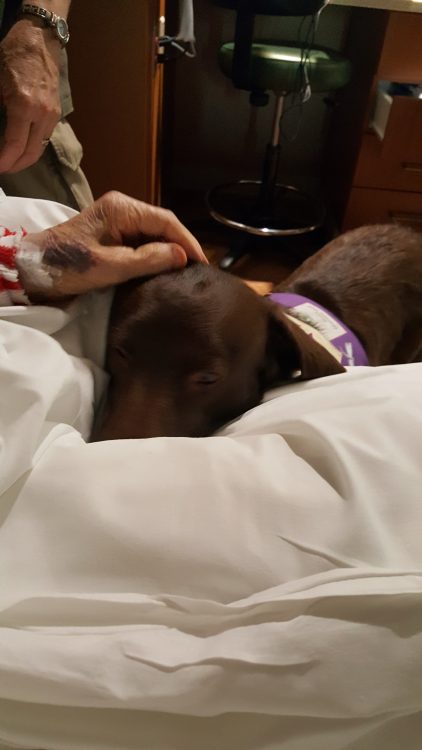
2. Epilepsy affects everyone who knows me.
My family has sleepless nights watching over me and early morning wake-ups with my body thumping on the floor. Then I need extra pills for 3 days. Momma has to clean up after me and watch that I don’t run into things around the house. Sometimes we miss or reschedule appointments. Friends sometimes do our shopping or help around the house. And many times I have to skip my therapy dog visits. My siblings have learned to stay back while Momma helps me through it. Epi-warriors need a pack for support.

3. Anyone can have seizures.
Epilepsy and seizures can affect any-pawdy, regardless of who you are or where you live. Not all seizures are caused by epilepsy. There are many kinds of seizures and types of epilepsy. It wears many faces.
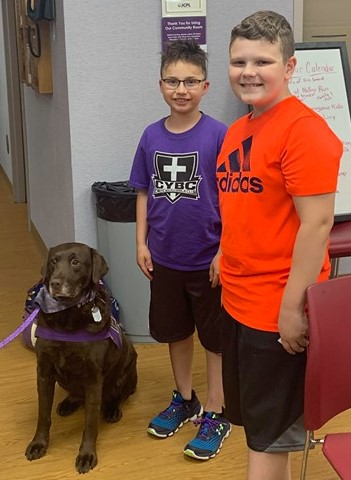
4. Epilepsy is not a disease.
It’s not contagious. It’s a condition of my brain’s reaction to my body’s condition. There is no cure for epilepsy, yet. With medical help, we can reduce the frequency and duration of seizures. Learn all you can about epilepsy from reliable resources.

5. People and dogs can both have epilepsy, and it has a similar effect on us.
The causes, symptoms, effects, treatments, and medications for seizures and epilepsy are the same for people and dogs. The only difference is that I take three times as many anti-epilepsy drugs as the average human adult! My veterinary neurologist studied and consulted on seizures in dogs as models for people. We have lots to learn from each other. I joined an epilepsy support group and get canine epi-warriors’ fur-amilies talking and sharing.
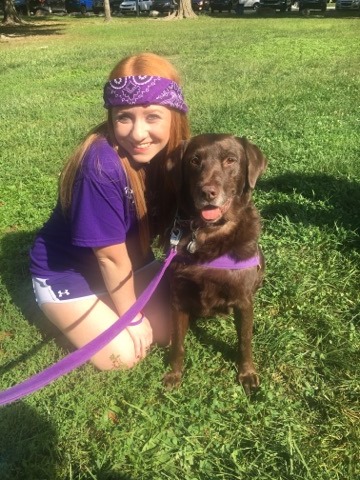
6. Seizures can be different for each Epi-Warrior.
We don’t know what causes my seizures. No two cases are exactly the same. What works for one human or dog may not work for another. We can learn from each other by sharing information to discuss with our own dog-ters. A boy I know with epilepsy was asked if he can tell when a seizure will happen. He said, “Yes, my leg tingles.” The night before a seizure, I drool and can’t stretch my back legs to do my exercises!
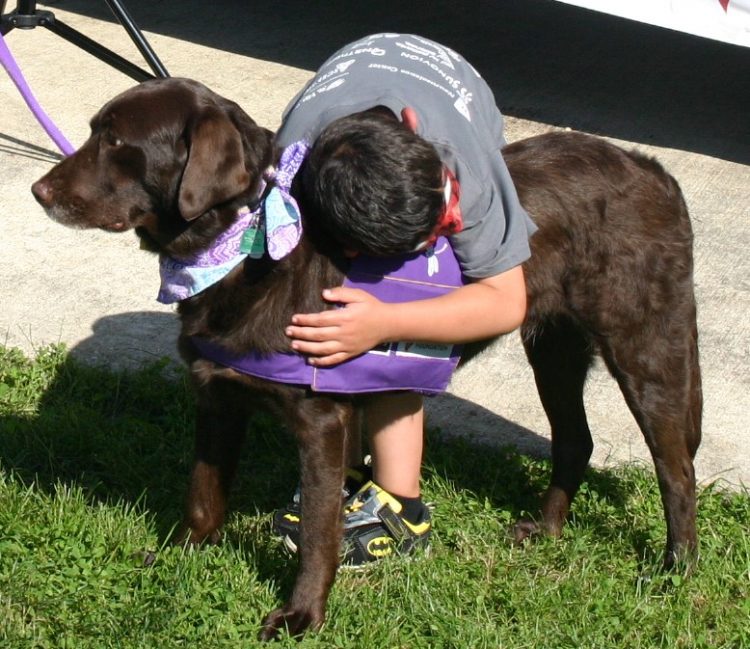
7. Epilepsy changes constantly.
Over time, seizure frequency, symptoms, and side effects may change. Medications and diet may need to change, too. We work closely with my dog-ters to reduce cluster seizures and improve my quality of life. I’ve also seen many specialists. My primary dog-ter consults closely with my neurologist and my human caretaker (momma). We’re all in this together.
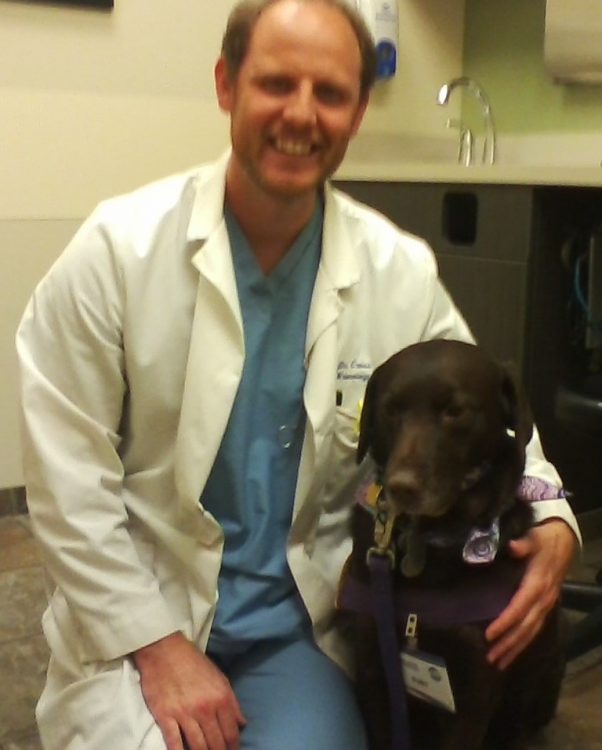
8. Keep a Journal.
Because it changes and the dog-ters need good information, I get regular tests and assessments. We record everything from dates, times, and duration of seizures to diet, medications, and possible triggers like smells, sounds, and moon phases. I keep my journal and medicine data sheets handy in case of an emergency. We record my ER contacts, meds, and Seizure Action Plan in a notebook in my go-bag with extra meds and a first aid kit.

What to Do When Someone Has a Seizure
Every-pawdy should know what to do if they see someone, or a dog, having a seizure. Stay calm. Seizures can be scary to witness, but we don’t feel pain during a seizure. Sudden activity, bright lights, anxious observers, and loud noises can make my seizures worse. First Aid procedures are the same for people and dogs – just call an ER vet for dogs, not 911.

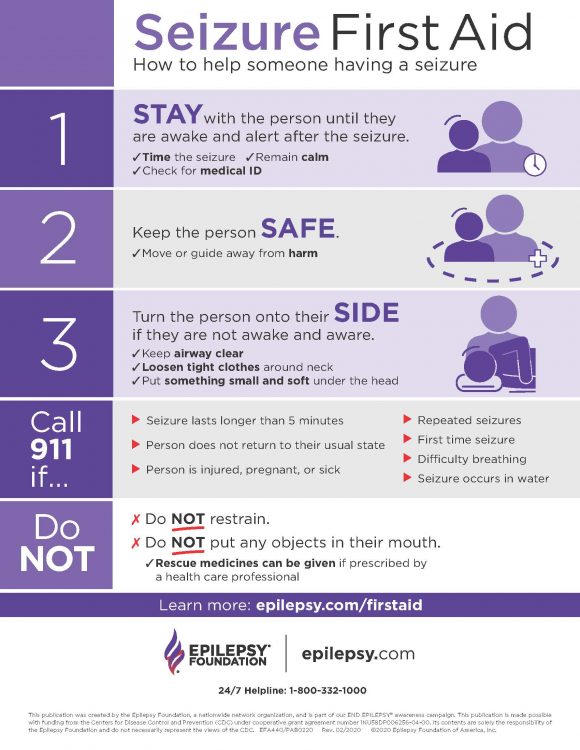
Make a Difference
Any-pawdy who has epilepsy or seizures can find ways to live a happy life and help others understand our condition. In most cases, seizures are not life-threatening and we can live long, fulfilling lives. I’ve visited up to 1,000 people some years and I show them how to make a difference and feel good.

Purple Day is on 3/26 each year to raise awareness about epilepsy. Would you spread the word and learn about seizures and epilepsy? Will you wear some purple for me and my fellow Epi-Warriors? We are turning the world purple this year and I’ll co-host a special blog here for you to check out!

